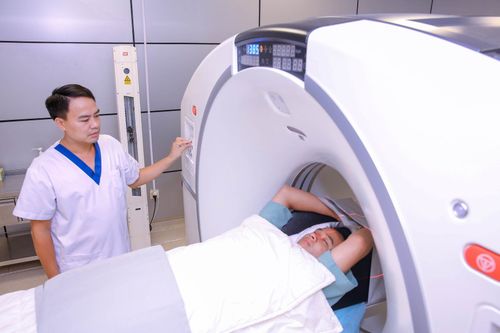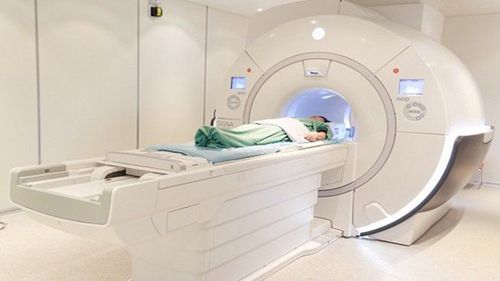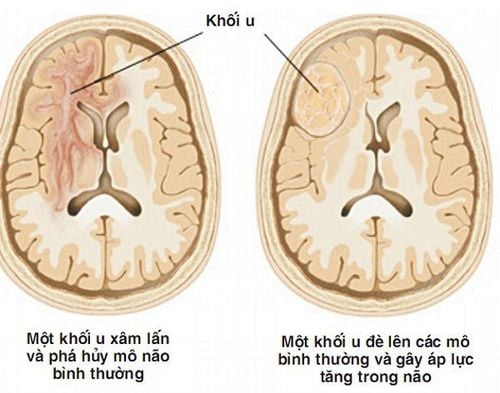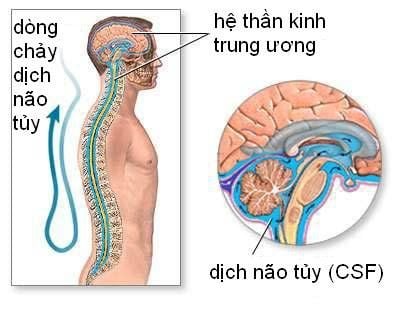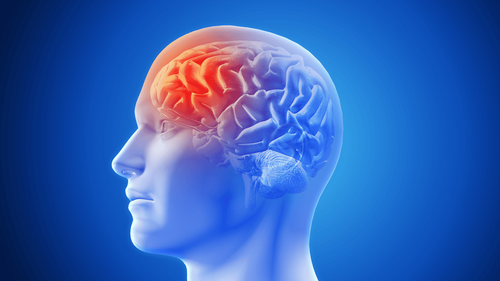This is an automatically translated article.
The article is made by Master, Doctor Ton Nu Tra My - Department of Diagnostic Imaging - Vinmec Central Park International General Hospital.
Cranial magnetic resonance imaging without injection is a new and modern imaging technique of great value in the evaluation of cranial abnormalities and diagnosis of neurological diseases. Thanks to this means, it is now possible to diagnose many diseases early, especially brain tumors, and help patients get early treatment effectively.
1. What is cranial magnetic resonance imaging without contrast injection?
No-contrast cranial magnetic resonance (MRI) is a non-invasive method that uses magnetic fields and radio waves to produce clear and detailed and clear cross-sectional images of the skull, especially Brain tumor thus helps to evaluate and detect lesions and abnormalities of the skull very early. Not only that, this method also evaluates the function of the brain, the function of the sensory area as well as the function of the motor area,... of the brain. Magnetic resonance imaging without contrast injection without ionizing radiation, There are no side effects of X-rays such as X-rays or CT scans, so it's safe for children and adults, can take multiple scans without the risk of complications from contrast agents. The outstanding advantage of this method is that it gives a clear image of the brain parenchyma, especially the cerebral vessels can be observed without the need for contrast injection, and accurately diagnoses brain stem and pituitary diseases. In addition, it is also possible to evaluate the parts that are hidden by the bones or are difficult to see when taken with other methods.
2. In which case is cranial magnetic resonance imaging without contrast injection indicated?
Suspected cerebral stroke: Early cerebral infarction, posterior fossa infarction, arteriovenous infarction, cerebral bleeding in stages. Detection of abnormalities of brain structures such as brain tumors. Detection of cerebral vascular malformations such as cerebral aneurysm, arteriovenous catheterization,... Encephalitis, meningoencephalitis.
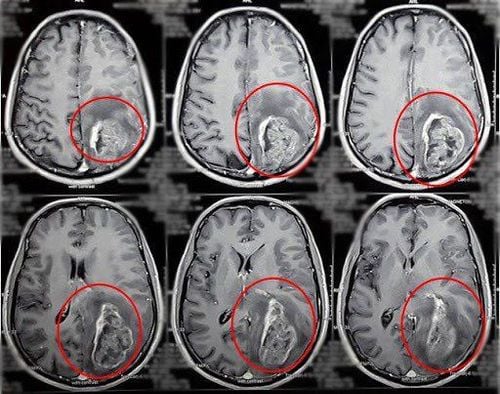
Chụp cộng hưởng từ sọ não giúp phát hiện tình trạng u não ở người bệnh
Elevated intracranial pressure, ventricular dilation Epilepsy Multiple sclerosis Assess for other problems such as: persistent headache, muscle weakness or paralysis, chronic nervous system conditions: brain atrophy, dementia intelligence Traumatic brain injury.
3. Contraindications
Absolute contraindications: Patients with pacemakers Relative contraindications: In people with magnetic metals Patients inability to lie still People who are afraid of light, do not lie alone.
4. Cranial magnetic resonance imaging procedure without injection of magnetic contrast agent
How magnetic resonance machines work: MRI machines are like a large donut with a tunnel in the center. The patient is placed supine on a table surface that can slide into the magnet hole. Strong magnetic fields are created by passing an electric current through the loops of wire inside the protective housing of the magnet.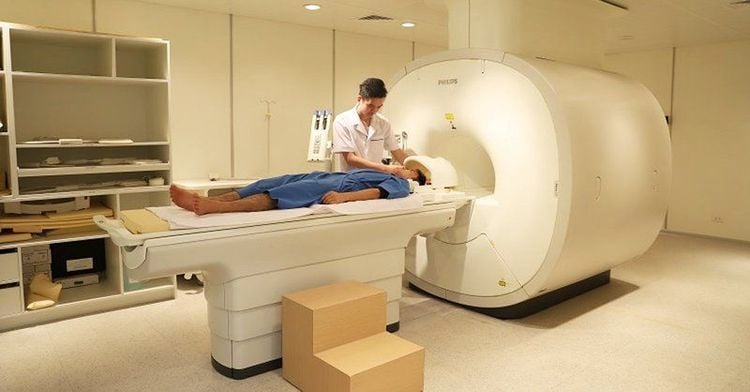
Tư thế chụp cộng hưởng từ sọ não không tiêm thuốc đối quang từ
Other coils in the magnet send and receive radio waves. When positioned inside the magnet, some protons in the body align with the magnetic field, which reacts with low-power radio waves that stimulate signals from the patient's body.
Radio waves are generated by specialized radio frequency coils- antennas designed for medical imaging.
The computer will perform calculations to produce black and white images of cross-sections of the skull. Images of the area being examined can be converted into 3D to make it easier to identify problems and abnormalities in the brain.
4.1 Preparation The patient is explained about the procedure, changed clothes in the exam room, removed jewelry, watches, metal objects if you have metal or electronic devices in your body, because the Their presence can be a hazard, affecting electronic equipment or image quality. For young children or excited patients, sedation is required because the patient needs to lie still during the scan. There may be noise during the imaging process, so the patient should use earplugs. A clinician's request for an MRI scan is available. 4.2 Steps Step 1. Move the patient into the machine compartment. The patient was in the supine position on the imaging table, then the table was moved into the machine compartment.
Step 2. The control technician shoots at the control room. Imaging techniques include:
Localization Selecting diagnostic pulse sequences suitable for examination purposes. Do the usual pulse sequences: T1, T2, Flair for all subjects. The cutting direction includes horizontal, vertical and horizontal cutting. Selection of specific pulse sequences for suspected pathologies. For example, T2* pulses for bleeding lesions, IR pulses for gray matter-related lesions, diffusion pulses (diffusion) for ischemic lesions, brain tumors, and abscesses. brain... so that the lesions are not missed. Run each pulse and process the acquired images, select the necessary images to reveal the pathology for printing. Step 3: The doctor reads the lesion, describes it on a computer and prints the results
Vinmec International General Hospital has a system of modern magnetic resonance imaging equipment for clear image quality, fast capture time, with a team of highly qualified medical doctors, professional service to help early detect diseases of the skull, spine, ligaments,...
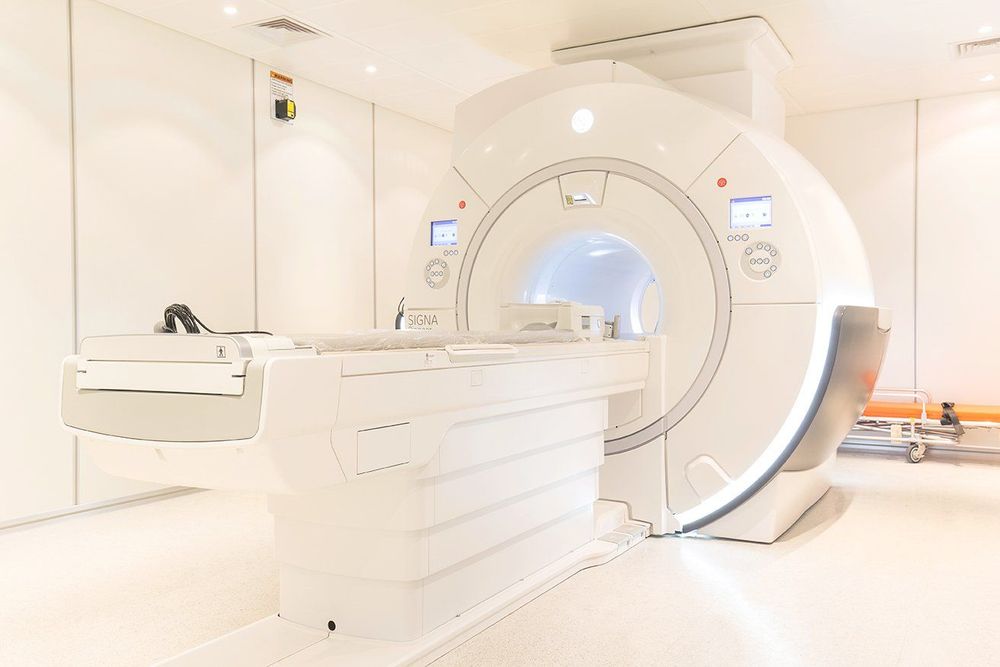
Hệ thống máy chụp cộng hưởng từ hiện đại tại Vinmec
Vinmec International General Hospital is one of the hospitals that not only ensures professional quality with a team of leading medical doctors, modern equipment and technology, but also stands out for its examination and consultation services. comprehensive and professional medical consultation and treatment; civilized, polite, safe and sterile medical examination and treatment space.
Master. Dr. Ton Nu Tra My is currently a Doctor of Radiology, Vinmec Central Park International General Hospital. Dr. Tra My used to be a lecturer in the Department of Diagnostic Imaging, Hue University of Medicine and Pharmacy and had a long time working at the Department of Diagnostic Imaging, Hue University of Medicine and Pharmacy Hospital.
To register for examination and treatment at Vinmec International General Hospital, customers can call Hotlines of hospitals or register online HERE.





